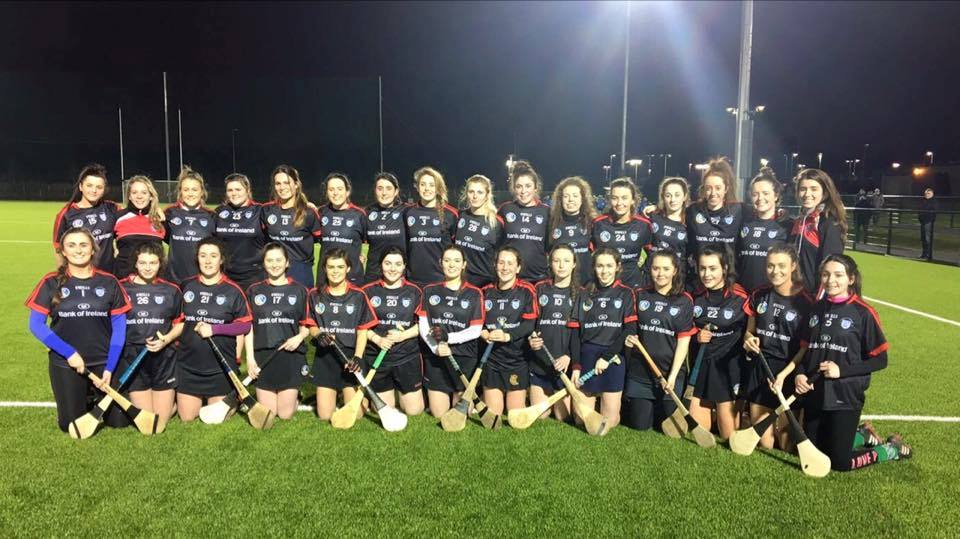The origins of this feature are rooted in the Chaplins Bar, after I had a chance encounter with a member of one of Trinity’s two ladies football teams, celebrating a challenge match they had played earlier in the day. Chaplins and GAA in Trinity have a deep bond. Not only has the pub sponsored the ladies teams – along with the Bank of Ireland – but it is also the place where players meet after matches to celebrate and have a few drinks.
What struck me most about the ladies teams was the camaraderie between the players. Everyone is friends and for a lot of people their entire experience in Trinity will orbit around the GAA teams. GAA is the perfect mixture for an incoming fresher. It promises loyal friends with similar interests, consistent exercise, competition and plenty of nights out – not to mention its positive effect on academic work and general well-being.
This has created a communal atmosphere in which the older players help freshers improve their skills and also get settled into college
Yet, despite the obvious allure and success of the ladies GAA team, it often receives less coverage in Trinity’s newspapers compared to the men’s game. It is clear from speaking to Katie Browne, the Social Officer for Trinity’s camogie team, that she is frustrated with the level of effort required to secure coverage for the club: “It’s annoying that you have to ask.” Yet such coverage is vital for these teams – the more publicity a team gets, the more quality players it will attract.
The main problem is the dominance of the men’s games in the GAA as an organisation. Ladies teams receive a fraction of the coverage the men’s teams get at county level. The Sunday Game, for instance, always begins with a long discussion of the men’s games. The discussion of the women’s games often feels like an afterthought, while women’s matches at inter-county level usually fail to attract the same crowds regularly enjoyed by the men’s. This has been going on for so long now that it seems almost normal.
The GAA’s official website has no fixtures or results devoted to third-level camogie or ladies football championships. Instead there are two other websites – ladiesgaelic.ie and camogie.ie – linked at the bottom of the page under the title “related organisations”. Both websites look outdated when compared to the modern and expensive-looking GAA website.
As Browne points out, to find results and fixtures for the ladies teams “you really need to know where to look”. This is an unnecessary and annoying impediment for people who want to report on the women’s game. To put it simply, information about men’s matches is a lot more readily available and therefore more likely to be reported on.
Yet this inequality doesn’t define the ladies GAA team, and in Trinity it has grown into a close-knit and successful outfit. The training is competitive and players are committed to developing Trinity GAA. The teams train twice a week and, including travel time, a training session can take three hours out of your day. This commitment can prove too much for some freshers and keeping them from dropping out is a challenge for the teams. Seemingly, the people who remain are there for the long haul.
A milestone for all new camogie players is a biennial trip with the hurling teams to Edinburgh, where they play shinty, a Scottish sport resembling a cross between camogie, hurling and golf. Browne is confident the trip will have freshers hooked for the rest of their time in Trinity: “If any [first years] go to [Edinburgh] it’d be very surprising if they left the club.”
There is only one camogie team, meaning all players – regardless of age – play together. This has created a communal atmosphere in which the older players help freshers improve their skills and also get settled into college. While the footballers have two teams, players of all ages mix, train and socialise together.
The lines between women’s and men’s GAA in Trinity can appear blurred. Most social events organised by the clubs are for both the women’s and men’s teams and there is a spirit of friendship and support between all the teams – with female players often sticking around to watch men’s games or trainings and vice versa.
As they become more successful, they are attracting more talented young players and getting the opportunity to compete against the best colleges in Ireland
The camogie team has been successful in recent years – last year winning the division three championship. This win means that they will be competing for the Purcell cup in Division Two. Their aim for the competition will be to lay down a marker for future years and possibly get out of their group, which currently consists of Maynooth and DIT.
This year is a big opportunity for the Gaelic footballers to claim silverware. The first team are competing in the Giles cup – the second division championship – and after performing well in the Division One championship last year they have a sizeable chance of winning the competition. The second team are playing in the Donaghy Cup and are similarly strong contenders.
It’s undeniable that Trinity GAA teams are still underdogs when compared to the established GAA colleges like University College Dublin (UCD) and Dublin City University (DCU). This has a historical basis but the gap is rapidly diminishing. While inter-county players are still more likely to go to DCU and UCD, the women’s football and camogie teams are growing in size and strength. As they become more successful, they are attracting more talented young players and getting the opportunity to compete against the best colleges in Ireland, while also getting a first-class education.







